RESPIRATORY SYSTEM
swaraj barik
#poet #writer I live with pride and self-respect.Writing is not my profession but my addiction . Medical Consultant,NursingStaff onlinemedical tutor
Briefly explain about respiratory system
Human Respiratory System
Introduction
The human respiratory system is responsible for the vital process of breathing, enabling oxygen intake and carbon dioxide removal. It consists of a network of organs and tissues that work together to facilitate gaseous exchange, ensuring cellular respiration and energy production.
Table of Contents
Definition
The human respiratory system is a biological network of organs and tissues that enable breathing. Its primary function is to supply oxygen to body cells and remove carbon dioxide, a waste product of cellular respiration.
Overview & Importance
Every living cell requires oxygen to produce energy through cellular respiration. The lungs, along with the airways and blood vessels, ensure a continuous supply of oxygen while expelling carbon dioxide.
Oxygen fuels the body’s metabolic activities.
Carbon dioxide removal maintains pH balance.
The lungs also play a role in vocalization and olfaction (sense of smell).
. Key Features of the Respiratory System
1. The breakdown of glucose in all cells produces energy (ATP).
2. Oxygen is transported to various tissues for cellular respiration.
3. Carbon dioxide is expelled from the body via exhalation.
4. The respiratory system regulates blood pH through gas exchange.
5. Specialized cilia and mucus help filter dust and microbes.
Parts of the Respiratory System & Their Functions
1. Nose & Nasal Cavity
Function: Filters, warms, and moistens incoming air.
Structure: Contains hair-like cilia and mucus-secreting glands that trap dust and microbes.
2. Pharynx (Throat)
Function: Passageway for both air and food.
Structure: Connects nasal cavity to the larynx & esophagus.
3. Larynx (Voice Box)
Function: Produces sound; prevents food from entering the windpipe.
Structure: Contains vocal cords and a cartilage flap (epiglottis) that covers the airway during swallowing.
4. Trachea (Windpipe)
Function: Conducts air to the lungs.
Structure: Tube supported by C-shaped cartilage rings to keep it open.
5. Bronchi & Bronchioles
Function: Distribute air to each lung.
Structure: Trachea divides into left & right bronchi, which further branch into smaller bronchioles.
6. Lungs & Alveoli
Function: Primary site of gas exchange.
Structure: Spongy organs containing millions of alveoli, where oxygen enters the blood, and carbon dioxide exits.
Respiratory Tract
The respiratory tract consists of:
1. External nostrils – Air intake.
2. Nasal chamber – Filters dust & warms the air.
3. Pharynx – Common passage for air & food.
4. Larynx – Houses vocal cords.
5. Trachea – Connects throat to lungs.
6. Bronchi & Bronchioles – Conduct air inside the lungs.
7. Alveoli – Tiny air sacs for gas exchange.
Mechanism of Breathing
Breathing occurs in two phases:
1. Inhalation – The diaphragm contracts, expanding the chest cavity, and air is drawn in.
2. Exhalation – The diaphragm relaxes, reducing lung volume, and air is pushed out.
Functions of the Respiratory System
1. Breathing (Pulmonary Ventilation) – Oxygen intake & CO₂ removal.
2. Gas Exchange (External & Internal Respiration) – Oxygen diffuses into blood; CO₂ diffuses out.
3. Speech Production – Airflow vibrates vocal cords.
4. Olfaction (Smell Perception) – Airborne chemicals stimulate olfactory receptors.
Types of Respiration in Humans
External Respiration – Gas exchange between lungs & blood.
Internal Respiration – Gas exchange between blood & cells.
Cellular Respiration – Glucose breakdown for energy production.
Stages of Aerobic Respiration
1. Glycolysis – Glucose breakdown into pyruvate.
2. Pyruvate Oxidation – Prepares pyruvate for energy release.
3. Krebs Cycle – Energy extraction via biochemical reactions.
4. Electron Transport Chain – Produces ATP using oxygen.
Frequently Asked Questions
Q1. What are the key parts of the respiratory system?
The major parts include the nose, pharynx, larynx, trachea, bronchi, and lungs.
Q2. What is the function of the alveoli?
Alveoli facilitate the exchange of oxygen & carbon dioxide between the lungs and blood.
Q3. What is the difference between external and internal respiration?
External respiration occurs in the lungs, exchanging gases with blood.
Internal respiration happens in body tissues, exchanging gases between blood and cells.
Q4. How does the respiratory system protect itself from infections?
Nasal hairs & mucus trap dust and microbes.
Cilia in the airways push out unwanted particles.
Immune cells in the lungs fight pathogens.
Q5. Why is oxygen essential for cells?
Cells need oxygen to break down glucose and generate ATP (energy).
Q6. How is voice produced?
Vocal cords in the larynx vibrate as air passes, creating sound.
Conclusion
The human respiratory system is vital for survival, ensuring oxygen supply and carbon dioxide removal. Understanding its structure and function helps us appreciate the importance of healthy lungs and breathing mechanisms.
